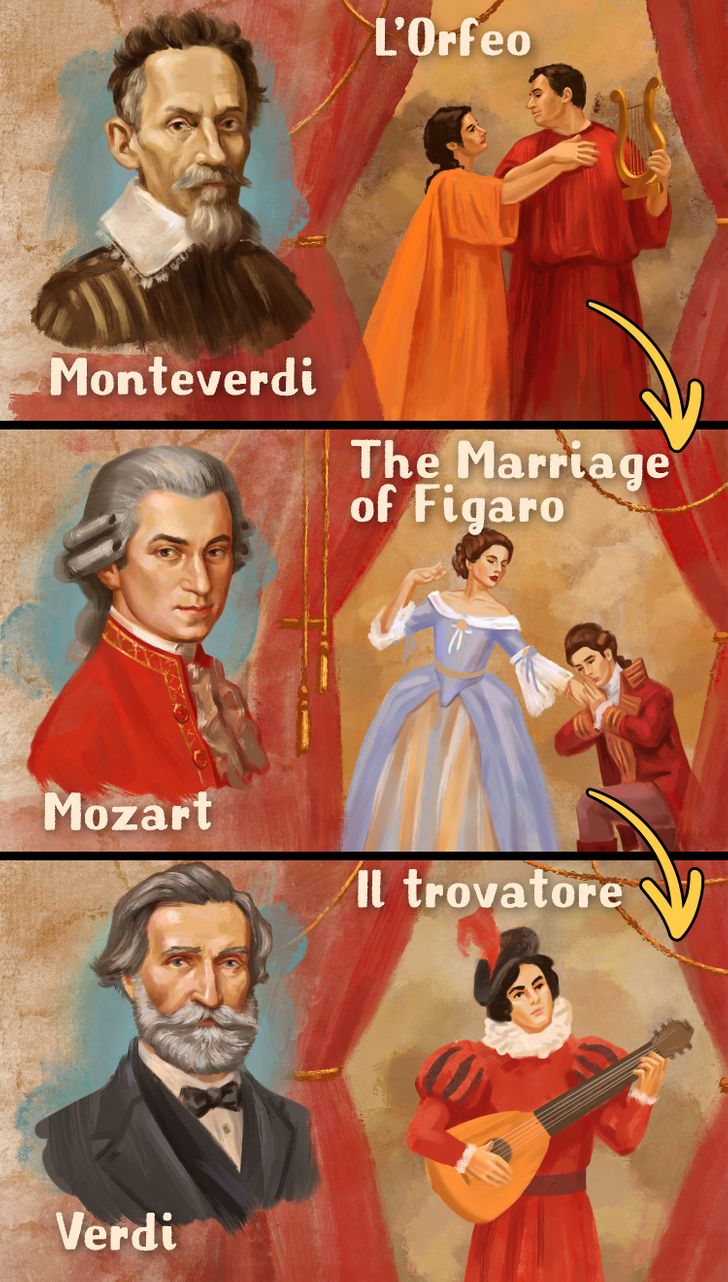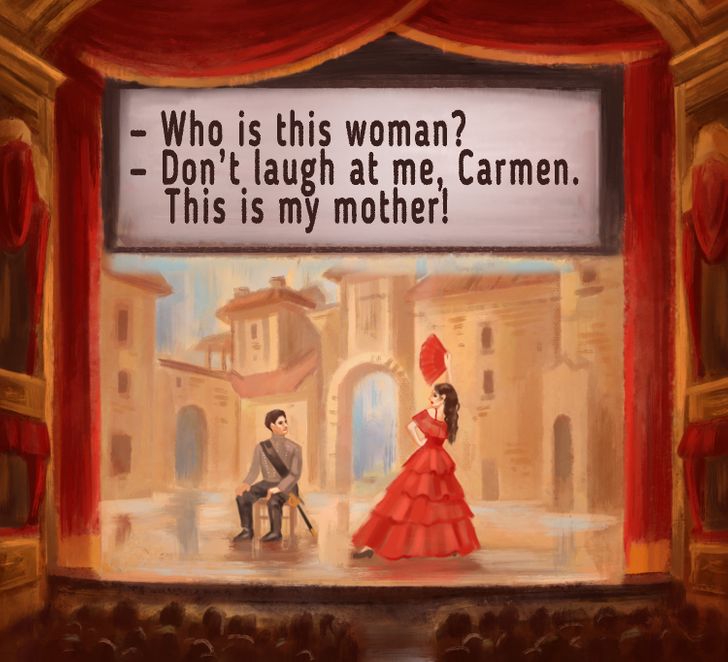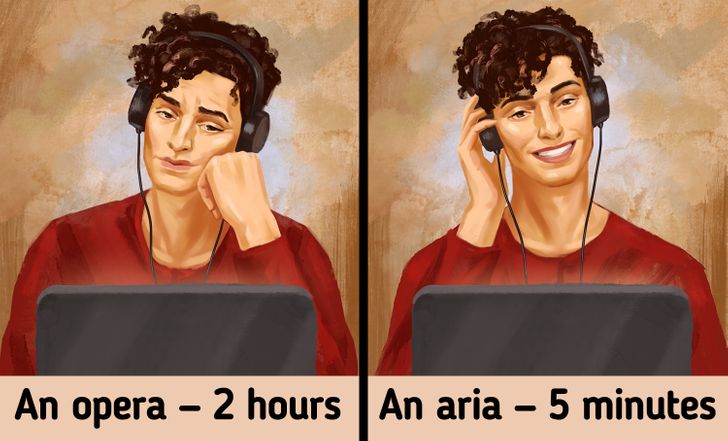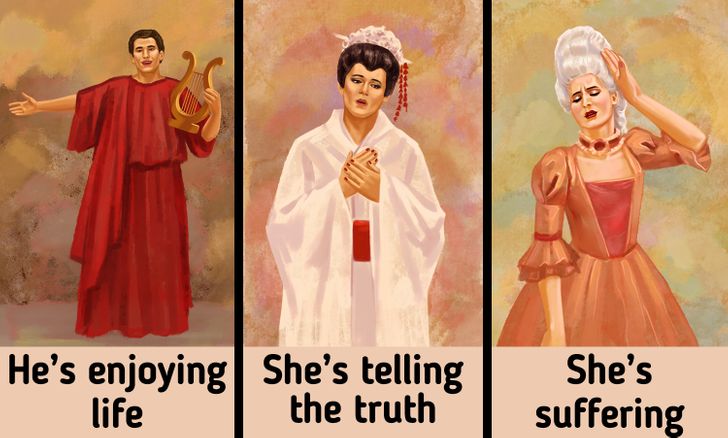How to Listen to and Understand Opera, so You Can Finally Appreciate It
Opera is a genre that can be described as fusion of music and theater. In his satirical book, The Devil’s Dictionary, American writer Ambrose Bierce provided the following definition of opera, “A play representing life in another world whose inhabitants have no speech but song, no motions but gestures, and no postures but attitudes.”
5-Minute Crafts will help you learn to love opera and finally find out what opera singers sing about on stage. In the bonus section, you’ll find arias which you can try listening to, to enjoy this form of art.
A brief history of opera

If you’ve never listened to opera before and come straight to a concert hall without being prepared, then you’ll probably have problems understanding what is happening on stage. And this will happen not because you are not smart enough, but because you need to have a certain basic level of knowledge to understand this form of art. However, you can easily learn it by yourself, you don’t have to study music to figure it out.
We can explain why you need to master the basics of opera in advance with a simple example. Imagine that you’re watching the latest part of Avengers, Star Wars, or Harry Potter. You know nothing about the characters, events, and story on screen. And because of that you anticipate that you won’t be able to enjoy the film. The same thing applies to opera: you need to be prepared to understand it.
First, you need to learn the periods of opera development, as well as find out the names of people who are considered iconic figures in this form of art.
- Opera began in the 16th century with the work Dafne by Jacopo Peri which, unfortunately, was lost. A bit later, during the transition from the late Renaissance to the early Baroque, one of the most popular composers was Claudio Monteverdi. And although it wasn’t Monteverdi who wrote the first opera, he is thought to be the “father” of this art. His work usually includes small orchestras. However, the same can be said about Monteverdi’s contemporaries. Other composers who wrote operas during the Baroque period were George Frideric Handel and Antonio Vivaldi.
- The Baroque period was transitioned into the classical period. Composers like Antonio Salieri and of course Wolfgang Amadeus Mozart were some of the most important figures of this period. Classical music is usually very formal. It strictly follows rules and structure, yet these things don’t take away from its beauty.
- After the classical era, a rather significant period in the history of opera began with composers like Giuseppe Verdi, Gaetano Donizetti, Richard Wagner, and countless others. During this period, large orchestras began to be widely used. Modern opera composers from the middle of the 20th century onward have almost exclusively followed this example.
💡 The 4 greatest figures in the history of opera are believed to be Mozart (The Marriage of Figaro), Wagner (Tristan and Isolde), Verdi (Il Trovatore) and Giacomo Puccini (Madama Butterfly).
Below we will consider 2 ways of learning opera basics.
If you want to understand a certain opera

You may have tickets on hand, or maybe you heard a passage you liked, and now you want to watch the full piece.
- Find out who wrote the opera, the nationality of the composer, and when he worked. Look up the lists of the most frequently performed operas to understand how well known the piece is and how central it is to the standard repertoire.
- Figure out the form of the opera. It can be a number opera, e.g. it consists of distinct arias or duets, separated by a spoken dialogue (a singspiel) or recitative. Or it can be a through-composed opera.
- Make sure you have access to the text translation in real time. Subtitles can help with this. Now they can be found not only under the video, but also in the concert hall above the stage (supratitles) or next to your seat. You can also read a libretto with the translation of the text of the opera.
💡 In descending order of frequency, operas are mostly written in Italian, German, French, English, Russian, Czech, and Spanish.
If you want to understand opera in general

This will require a broader approach and you will have to listen to more than one piece.
- Start small. Before listening to an opera that lasts 2 hours, pay attention to the arias, which last no more than 10 minutes. They will not only give you a general idea of the entire piece, but also help you understand the composer’s style.
- Listen to different composers. But don’t start your journey with Wagner, he’s too difficult for beginners. The best choices would be Gioachino Rossini and Mozart. Italians are famous for their operas, so they’ll help you understand this art better. Choose something light, simple, and with a catchy melody. Even if you haven’t been fond of opera before, you have probably heard some famous pieces. For example, the aria Queen of the Night from the opera The Magic Flute by Mozart.
- Read the libretto, look at the subtitles. Take every opportunity to dive deeper into the piece. Once you’ve developed these skills, try to follow the piano and vocal scores. Even if you don’t know how to read music, trying to follow along with the score will help you focus on the music. Scores of the most famous operas, written over 100 years ago, can be easily found in the IMSLP library. Just make sure you are using vocal scores rather than full orchestral scores, which will be difficult for beginners.
- Develop your listening skills. You’ll have to listen to an aria a few times before you get familiar with it. And people tend to enjoy new forms of music after they become recognizable.
Pay attention to gestures

Since opera is characterized by a combination of singing and acting, it can be understood not only by ear, but also visually. A singer can portray emotions with the help of facial expressions, for example, frowning, rounding their eyes, or raising their eyebrows. But the concert hall is large, and the audience is usually separated from the stage by an orchestra pit. Therefore, even by sitting in a front row seat
it’s not always possible to see the faces of the singers.
Fortunately, opera singers use certain gestures that help viewers better understand what their singing is about. Peter Gammond, the author of the book The Bluffer’s Guide to Opera: Bluff Your Way in Opera described them:
- The arm is set aside. Or, both arms are wide apart. This way, a singer shows how much they are enjoying the current moment and their life in general. Taking in account the plots of many operas, this gesture is most often seen only in the first scenes, since the action becomes more and more gloomy and pessimistic toward the end.
- A hand or both hands are folded on the chest. This way, a singer shows that their words are sincere and truthful. And even though the events on the stage may resemble the theater of the absurd sometimes, this gesture neutralizes doubts about the whole action.
- A hand is on the forehead with the palm facing up. This means a character is suffering, they’re tormented by remorse and mental anguish. Or, they may be confused, grieving, or all of the above.
Bonus: Arias to listen to
- Nessun dorma (Turandot, Giacomo Puccini)
- Toreador Song (Carmen, Georges Bizet)
- Cessa di più resistere (The Barber of Seville, Gioachino Rossini)
- Queen of the Night aria (The Magic Flute, Wolfgang Amadeus Mozart)
- Ah! Mes amis (La fille du régiment, Gaetano Donizetti)
- Libiamo ne’ lieti calici (La traviata, Giuseppe Verdi)
- La donna è mobile (Rigoletto, Giuseppe Verdi)
- Non più andrai (The Marriage of Figaro, Wolfgang Amadeus Mozart)
- Là ci darem la mano (Don Giovanni, Wolfgang Amadeus Mozart)
- Martern aller Arten (Die Entführung aus dem Serail, Wolfgang Amadeus Mozart)
- Casta diva (Norma, Vincenzo Bellini)